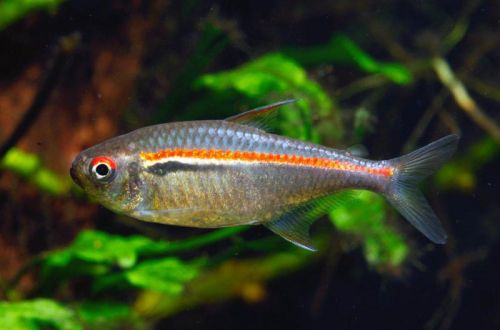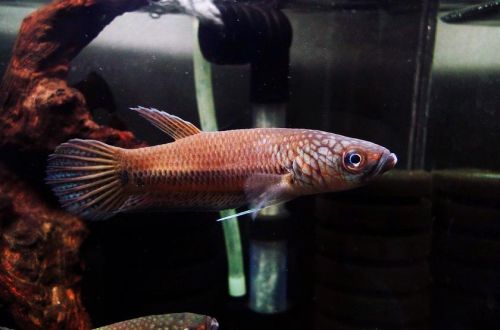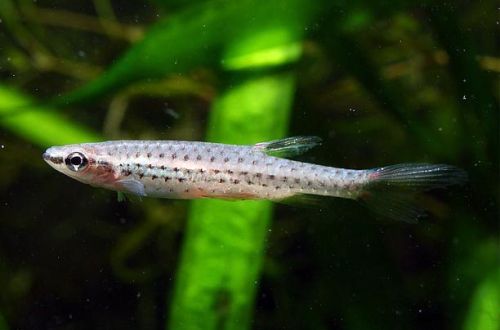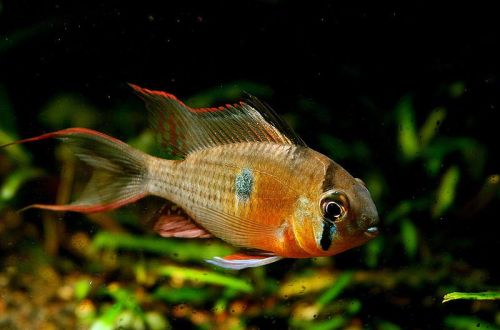
Tetra Amapa
Tetra Amapa or Red Striped Tetra, scientific name Hyphessobrycon amapaensis, belongs to the Characidae family (Characinidae). The fish is named after the Brazilian state of Amapa, where it was first discovered. It is considered undemanding to the content, easy to breed and perfectly compatible with other peaceful fish.

Contents
Habitat
It comes from South America from a limited area of the Brazilian state of Amapa in the east of the country near the Amazon delta. Inhabits small rivers and streams flowing among savannah pastures containing clear light brown water with sand or gravel substrates.
Brief information:
- The volume of the aquarium – from 40 liters.
- Temperature – 23-28°C
- Value pH — 5.0–7.0
- Water hardness – 1–10 dGH
- Substrate type – any
- Lighting – subdued
- Brackish water – no
- Water movement is weak
- The size of the fish is 2–3 cm.
- Food – any food
- Temperament – peaceful
- Keeping in a group of 8-10 individuals
Description
Adult individuals reach a length of 2–3 cm. Sexual dimorphism is weakly expressed, males and females are outwardly similar to each other. The coloration is gray with a silvery belly. The body pattern consists of a narrow horizontal stripe of red and white running from head to tail, and a black stroke below this stripe.
Food
Unpretentious omnivorous species, can be content with exclusively dry food in the form of flakes, granules. A great addition would be the inclusion in the diet of live or frozen daphnia, artemia, bloodworms, etc.
Maintenance and care, arrangement of the aquarium
The optimal size of the aquarium for a flock of 8-10 fish starts from 40-50 liters. The fish looks most harmoniously among the design, reminiscent of the natural habitat and including such decorative elements as sandy soil, driftwood, aquatic plants, including floating ones.
An optional, but useful design element will be the dried leaves of some trees, which are placed on top of the substrate. They serve not so much as a decoration, but as a means of giving water a chemical composition similar to that in natural reservoirs. As they decompose, they release tannins, which are a natural antimicrobial and antifungal agent, which is beneficial to the health of the aquarium ecosystem.
Successful long-term keeping of Tetra Amapa depends on maintaining stable water conditions within an acceptable temperature and hydrochemical range. This is largely due to the operation of the filtration system and other equipment, as well as the regularity of standard aquarium maintenance procedures. The latter include weekly replacement of part of the water with fresh water, timely removal of organic waste (feed residues, excrement), replacement of leaves, equipment maintenance, etc.
Behavior and Compatibility
Peaceful schooling fish, prefers to be in the company of relatives numbering at least 8-10 individuals. Compatible with other non-aggressive species of comparable size.
Breeding / breeding
Breeding is simple, in favorable conditions Tetra Amapa is able to regularly produce offspring. In the artificial environment of aquariums, there is no breeding season, fish can come into spawning throughout the year, so in a large flock, as a rule, one or more females will be constantly ready to spawn. Parental instincts are not developed, there is no care for offspring, moreover, on occasion, adult fish will definitely feast on their own caviar and fry. In order to preserve the brood, it is moved to a separate tank with identical water conditions, where the newborn fish will spend the first months of their life until they are large enough.
Fish diseases
Hardy and unpretentious fish. If kept in suitable conditions, then health problems do not arise. Diseases occur in case of injury, contact with already sick fish or significant deterioration of the habitat (dirty aquarium, poor food, etc.). Read more about symptoms and treatments in the Aquarium Fish Diseases section.





